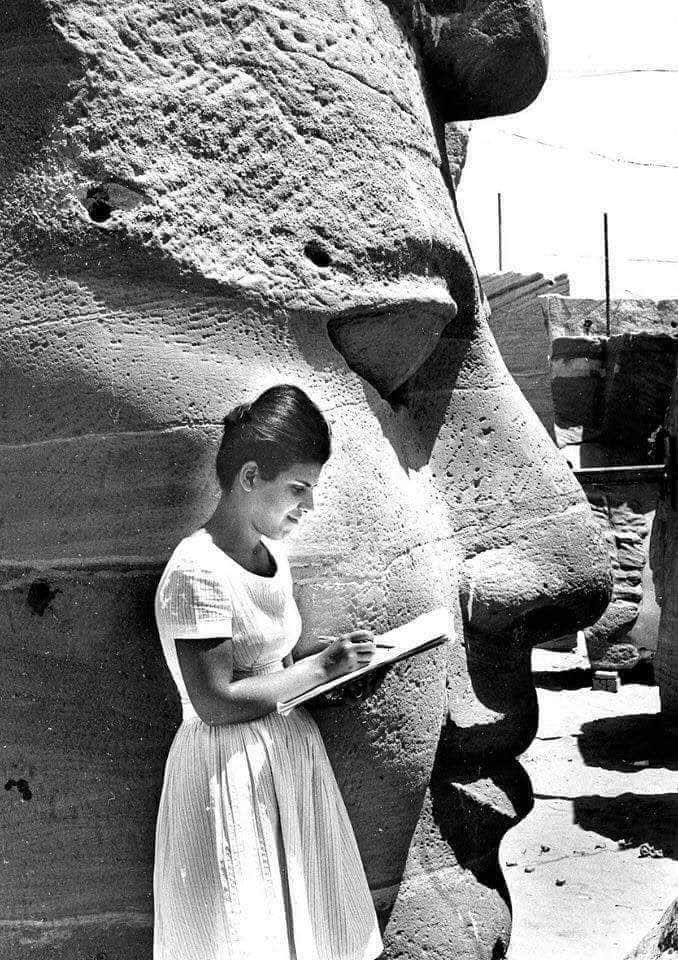The 1966 Egyptian comedy “Marati, Mudir Aam” (My Wife, The Director General), is a classic portrait of the cultural misconception regarding working women, where the main character “Hussein” fears to confess to his co-workers that the company’s general manager is in fact his wife “Esmat”. The movie vividly displays the gender gap in Egypt’s workplace, and the cultural stereotypes regarding employed women, who are not often perceived as “wife-material”.

This scenario has remarkably changed in recent years. With eight Egyptian female ministers, 66 Egyptian female judges, 25 percent female representatives in the Parliament, and a national holiday celebrating the country’s women, it is evident that Egyptian women have a noticeable role in the political, social and economic aspects of the state, compared to their peers, centuries ago.
Today’s economic and political participation of Egyptian women is indeed the outcome of a long-lasting fight for Egyptian women’s rights to work and to get an education. When analyzing the current state of Egypt’s female labor force, many questions come to mind: Who are those icons who paved the way for the women of today? What are the challenges that Egyptian women currently face in the workplace? And, is there hope for a better and more solid economic participation and educational attainment for Egyptian women?
Egypt’s Female Labor Force Between The Fight And The Evolution
Egypt is principally an agrarian society. Hence, in the 18th Century, Egyptian women were not officially employed; they were mainly helping their husbands and families with their crops. As for education, it was only exclusive to rich families, who generally chose to educate their girls at home.
As an attempt to modernize Egypt and to significantly develop the country’s economy and society, the founder of modern Egypt, Muhammed Ali Pasha introduced the first school of medicine for women in 1832. Following the footsteps of his grandfather, Khedive Ismail introduced the first state-owned school for girls, “El-Sania School” in 1878, which was considered a good opportunity for less-fortunate girls, as education attainment was only conserved to the country’s elites.
Fortunately, throughout history, the state’s rulers were not the only parties to call for Egyptian women’s education and empowerment. In fact, many figures and leaders fought for women’s rights, and demanded for a better position of women in the society. The scholar Rifaa Rafii el-Tahtawi, is an example of those icons, as he called on the importance of women’s education and the necessity of reforming the unjust system, in his book “A Guide to Education of Girls and Boys” in 1872.
Later, Qasim Amin, a jurist, equally demanded for Egyptian women’s rights and criticized the society’s famous cultural practice, arranged marriages, in his book “Tahrir El maraa” (Women’s Emancipation) in 1899.
Many Egyptian women set great examples and were true inspiration for future generations, as they paved the way by their resilience and their bravery to challenge the then-unjust political and social landscape of the country. In the early 20th century, Malak Hifni Nassef was one of those Egyptian key-figures who greatly contributed to women’s advancement in Egypt. She challenged the law, which forbids women to teach while married and she became the first female Egyptian teacher.

Malak Hifni Nassef.
Moreover, Huda Shaarawi was also a key-figure and one of the first Egyptian feminists. In 1914, she founded the Union of Educated Egyptian Women, and she helped in organizing the first anti-colonial women’s demonstration in 1919. In addition, in 1923, she created the Egyptian Feminist Union (EFU), and served as its first president.

Huda Shaarawi.
Centuries later, under the rule of Egyptian President Gamal Abdel Nasser, Egypt’s industrialization process and economy strengthened, which in return made the public sector rise, offering hundreds of employment opportunities for holders of high school diploma and higher education degrees, whether females or males.
Working Women In Egypt: The Road Less Traveled By
Working women face many challenges as they are often met with cultural misconceptions, including their incompetence to fit in to the stereotypical “wife” image. Moreover, many think that it is challenging for working women to balance between managing their household and working, all while being a mother.
Yet, this is not the only challenge female labor force face. In fact, the Egyptian culture have a deep-rooted beliefs regarding gender roles, where males are the ones expected to work and support the family.
“Low female labor force participation has been related to kin-ordered patriarchal family structures. The religious and cultural norms state that the role of men is clearly identified as the main breadwinners, while women are economically dependent on men,” according to the paper “Women’s Participation in the Egyptian Labor Market” by Rana Hendy, published by the Economic Research Forum.
What Is Next?
As a part of Egypt’s 2030 vision to empower women, the Minister of Planning and Economic Development, Hala El-Saeed, has previously announced, that the country aims to increase its female workforce, to reach 40 percent.
Although there is a remarkable advancement in Egyptian female economic participation, yet there is always room for improvement, since Egypt’s female employment rate is lower than most countries. According to World Economic Forum’s Global Gender Gap Report of 2020, which benchmarks the progress of different countries towards gender parity in four dimensions, including Economic Participation and Opportunity, Educational Attainment, Health and Survival, and Political Empowerment, Egypt ranked the 134th out of 153 country, in the global index, and landed the 8th regionally.

Rankings by Region, Middle East and North Africa (MENA), 2020
Moreover, according to the 2012 study “Female Disadvantage in the Egyptian Labor Market: A Youth Perspective”, by Maia Sieverding, the unemployment rate of females is significantly higher than their male counters, although the two parties have the same educational level. The rate of female youth unemployment is almost 30 percent, while youth male’s unemployment rate is lower than 15 percent, indicating a significant gender gap.

Unemployment rate among youth, by education and gender.
Many female (and also male) figures advocated for Egyptian women’s advancement and rights to be empowered, educated and employed.
Our current state, as today’s women, is the result of years-lasting efforts, not only of Egypt’s iconic feminists, but in fact of every woman who challenged her circumstances, the society and the law to get her basic right; which is to work.



























